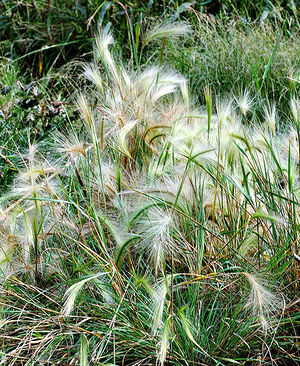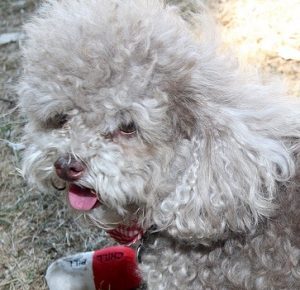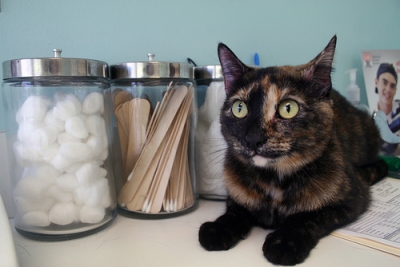
The name Foxtail is descriptive of several species of grasses which resemble a fox’s tail.
While the foxtail plant itself appears innocuous, it can cause serious injury to cats and dogs and can even be life-threatening. The danger is in the awns of the plant. Awns are small parts that are barbed and attach themselves to cats, dogs and your clothing.
The awn is a part of the sheath at the top of the plant in which the seeds are enclosed. The awns carry the seeds to different areas, burrowing them into the ground where new plants grow. Windy days help spread the awns.
When dogs, particularly hunting dogs, and cats run through the grass, the awns stick to their fur, between toes, paw pads. Awns can be inhaled through the nose and can enter the mouth and be ingested. They have sharp points and become embedded in the skin and enter the pet’s body.
Once inside the pet’s body, they can move and affect any part including lungs, brain, digestive tract, any organ. The awns then stick in internal organs causing serious infections and abscesses. If left untreated, they can become deadly. Once embedded they can be difficult to remove.
Signs of embedded awns can be excessive grooming of an area of the body, a small hole in the skin where the awn has entered the body, painful swellings and lumps, abscesses, head shaking, head tilt, ear discharge, bleeding from genitals, pawing the nose, violent sneezing sometimes producing blood, eye redness, tearing, discharge, pawing the eye, cough, gagging, exaggerated swallowing, mouth odor, any sign of pain.
Foxtails can grow anywhere, even in your backyard. When hunting or hiking with your dog, try to avoid areas overgrown with foxtail or use some type of protective clothing.
If foxtails are growing in your garden, destroy them by pulling them out, mowing or raking.
When your cat and/or your dog comes indoors, thoroughly check all body parts – coat, tail, toes, pads, ears, nose, inside mouth underbelly. You can remove awns that are visible with a tweezer.
If an awn is partially or fully embedded, let your veterinarian examine the area and remove it. If symptoms develop, surgery to remove the awn may be the only answer.


